Classification of Bones
An Overview

Bones form the structural framework of the human body and play a crucial role in movement, protection, and support.
Based on their structure and function, bones can be classified into six primary types:
- Long Bones
- Short Bones
- Flat Bones
- Irregular Bones
- Sesamoid Bones
- Accessory Bones
1. Long Bones
Long bones are primarily responsible for anchoring muscles and facilitating movement.
These bones feature a cylindrical shaft and two expanded, smooth ends on each side, which are used for articulation with other bones. Their elongated structure allows them to act as levers, enabling efficient movement.
Examples of Long Bones:
- Radius and Ulna: Bones of the upper limb that play a key role in forearm movement.

2. Short Bones
Short bones are designed to provide stability and support, primarily connecting other bones.
They have equal dimensions in length, width, and thickness, making them more cube-like in shape. Despite their irregular shape, short bones are covered mostly in cartilage, aiding in smooth articulation.
Structure: Consist of spongy bone encased in a thin layer of compact bone.
Examples of Short Bones:
- Carpal Bones: Found in the wrist.
- Tarsal Bones: Located in the ankle.
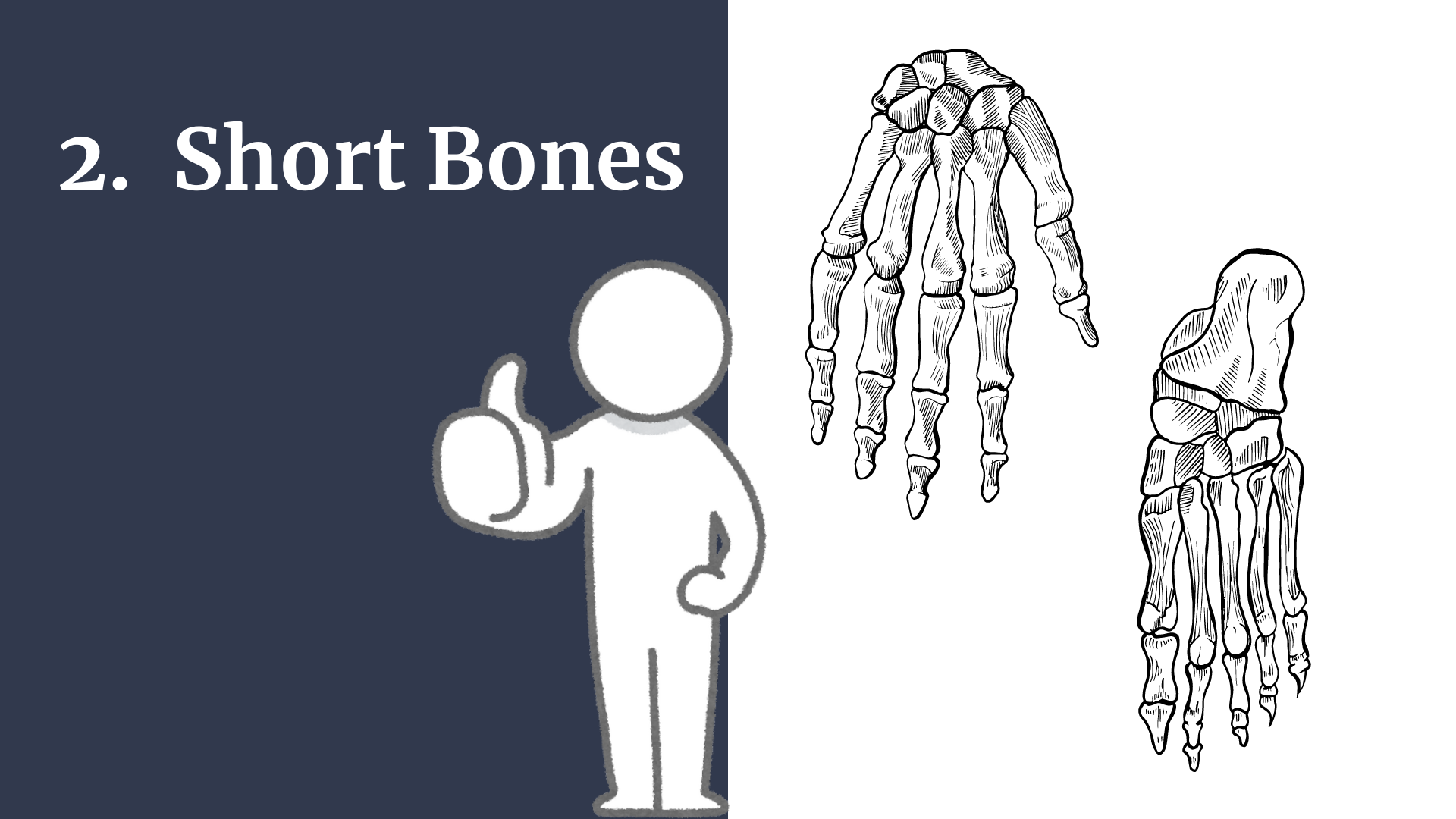
3. Flat Bones
Flat bones are thin, flattened, and usually curved, providing a protective shield for internal organs.
They consist of a layer of spongy bone (called diploe) sandwiched between two layers of compact bone. This structure allows flat bones to absorb impact, protecting delicate tissues beneath them.
Examples of Flat Bones:
- Ribs: Protect the thoracic cavity.
- Sternum: Shields the heart and lungs.
- Scapulae: Form the shoulder blades.
- Bones of the Skull Vault: Protect the brain.

4. Irregular Bones
Irregular bones have complex shapes with multiple projections and processes. These bones are designed to perform specific functions, often related to protection and support, and are composed of spongy bone covered by compact bone.
Examples of Irregular Bones:
- Hip Bone: Supports the weight of the body and provides attachment for various muscles.
- Vertebrae: Form the backbone, protecting the spinal cord.
- Bones of the Skull Base: Such as the sphenoid, temporal, and mastoid bones.
- Facial Bones: Including the maxilla and zygomatic bones.
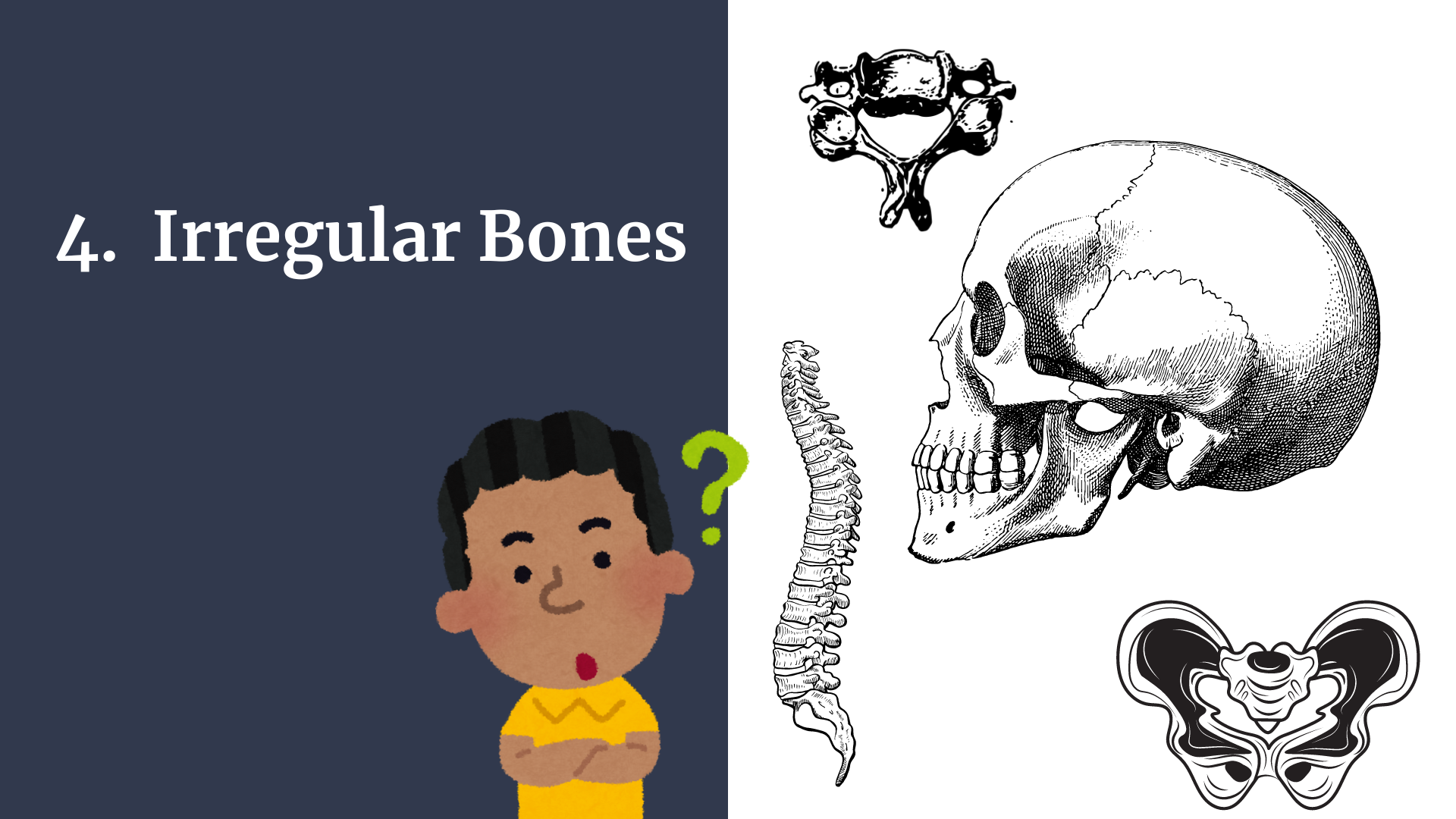
Pneumatic Bones
(A Subcategory of Irregular Bones)
Pneumatic bones are a special type of irregular bone containing air-filled cavities called sinuses. These cavities lighten the weight of the skull and are common sites for infections, leading to conditions such as sinusitis.
Examples of Pneumatic Bones:
- Maxilla: Upper jawbone.
- Ethmoid Bone: Located between the eyes.
- Mastoid Bone: Part of the temporal bone behind the ear.
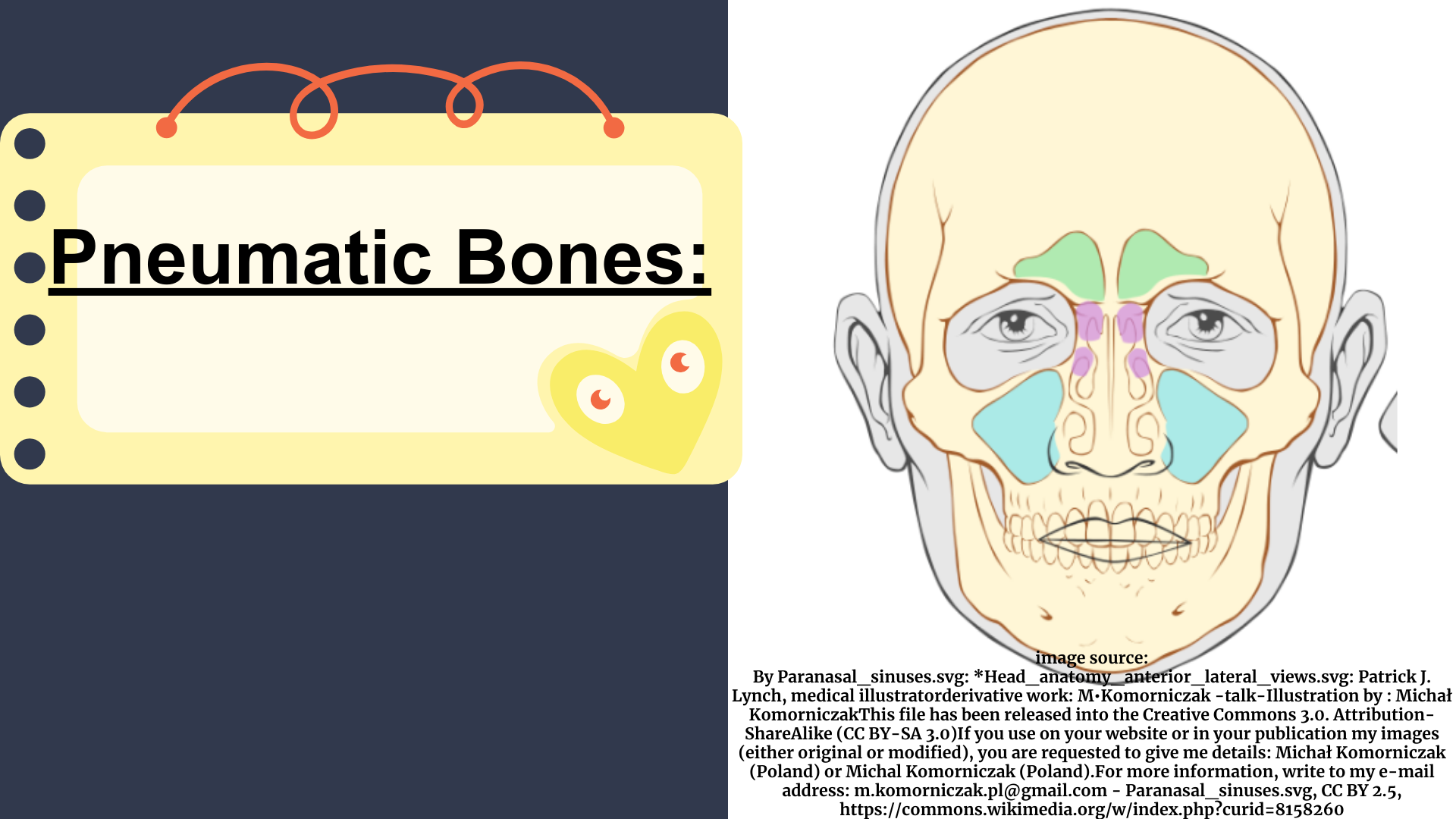
5. Sesamoid Bones
Sesamoid bones are small, rounded bones embedded within tendons and muscles. They act as pulleys, allowing tendons to glide smoothly over joints, thereby improving the efficiency of muscle movement.
Examples of Sesamoid Bones:
- Patella (Kneecap): The largest sesamoid bone, embedded in the Quadriceps femoris muscle, facilitating knee extension.
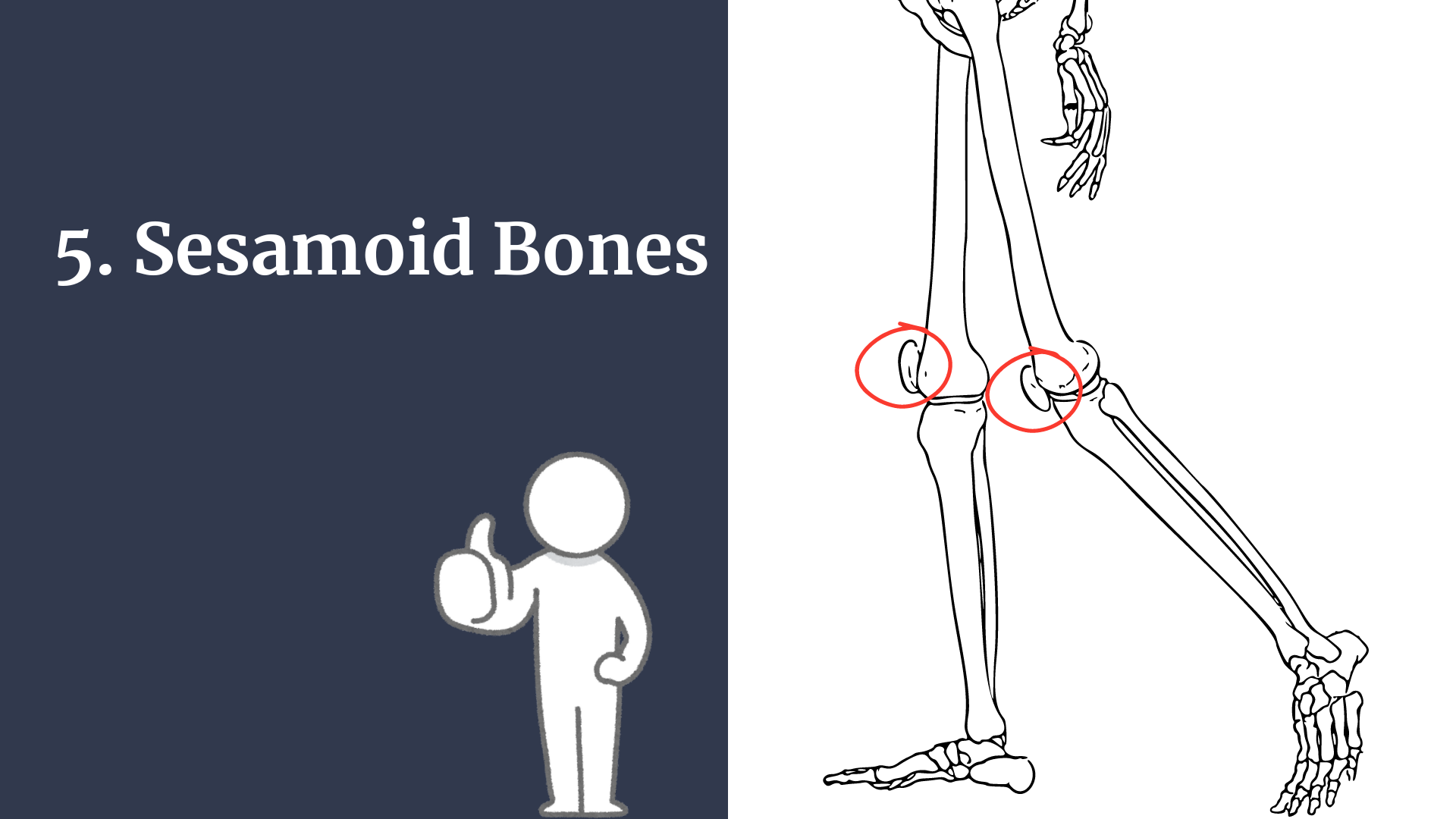
6. Accessory Bones
Accessory bones are extra bones that are not typically present in the skeleton.
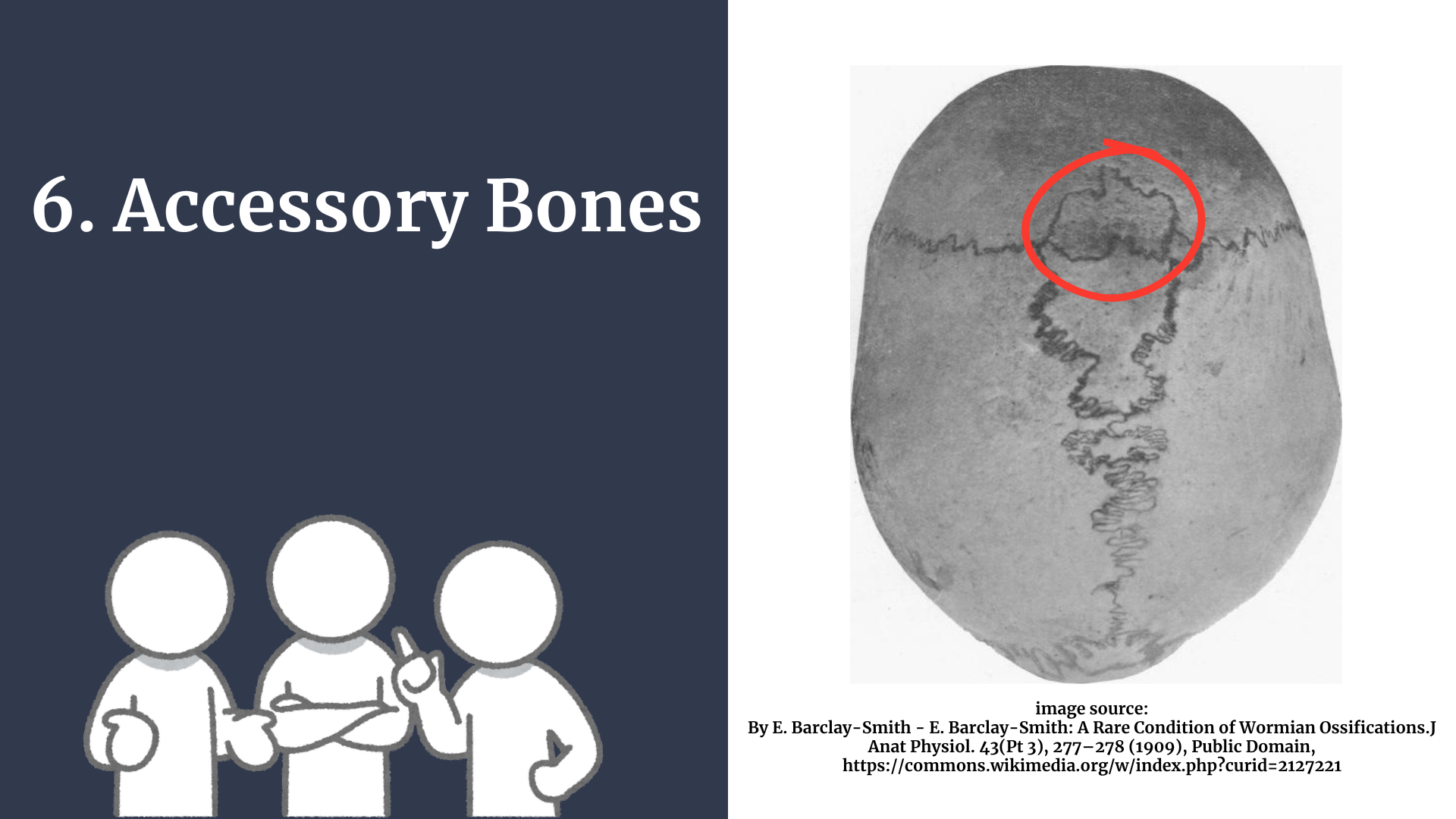
They are classified into three types: Supernumerary Bones, Wormian Bones, and Heterotropic Bones.
A) Supernumerary Bones
These bones form when an additional secondary center of ossification appears within a main bone, leading to the development of a separate bone instead of fusing with the main bone.
Example: Os Vesalianum: Found adjacent to the tuberosity of the 5th metatarsal bone.
B) Wormian Bones
Wormian bones, also known as intra-sutural bones, appear as small bony islands between the sutures of the skull vault.
Example:
Lambdoid Suture of the Skull: A common location for Wormian bones.
C) Heterotropic Bones
Heterotropic bones develop in soft tissues, such as muscles, rather than in the typical skeletal locations.
Example:
Rider’s Bones: Found in the adductor muscles of horse riders.
Conclusion
Understanding the classification of bones is essential for comprehending their various functions within the body. Each type of bone, whether long, short, flat, irregular, sesamoid, or accessory, plays a distinct role in ensuring the body's structure, movement, and protection.